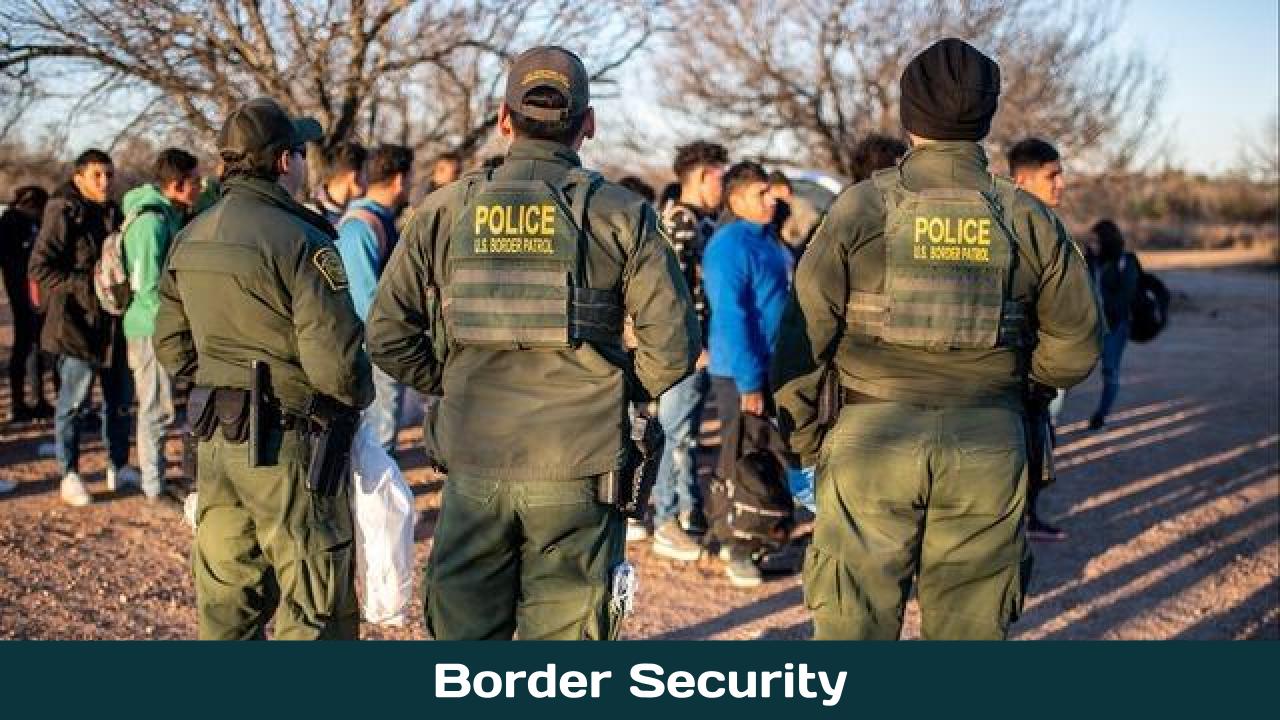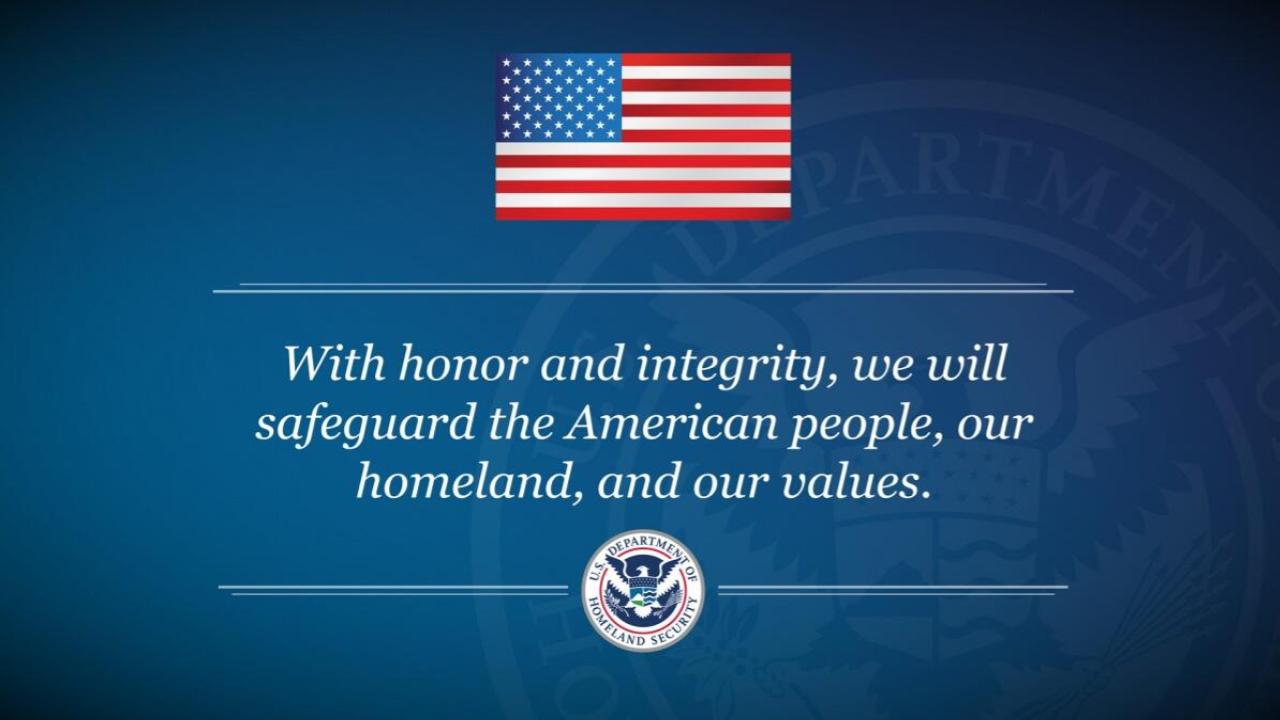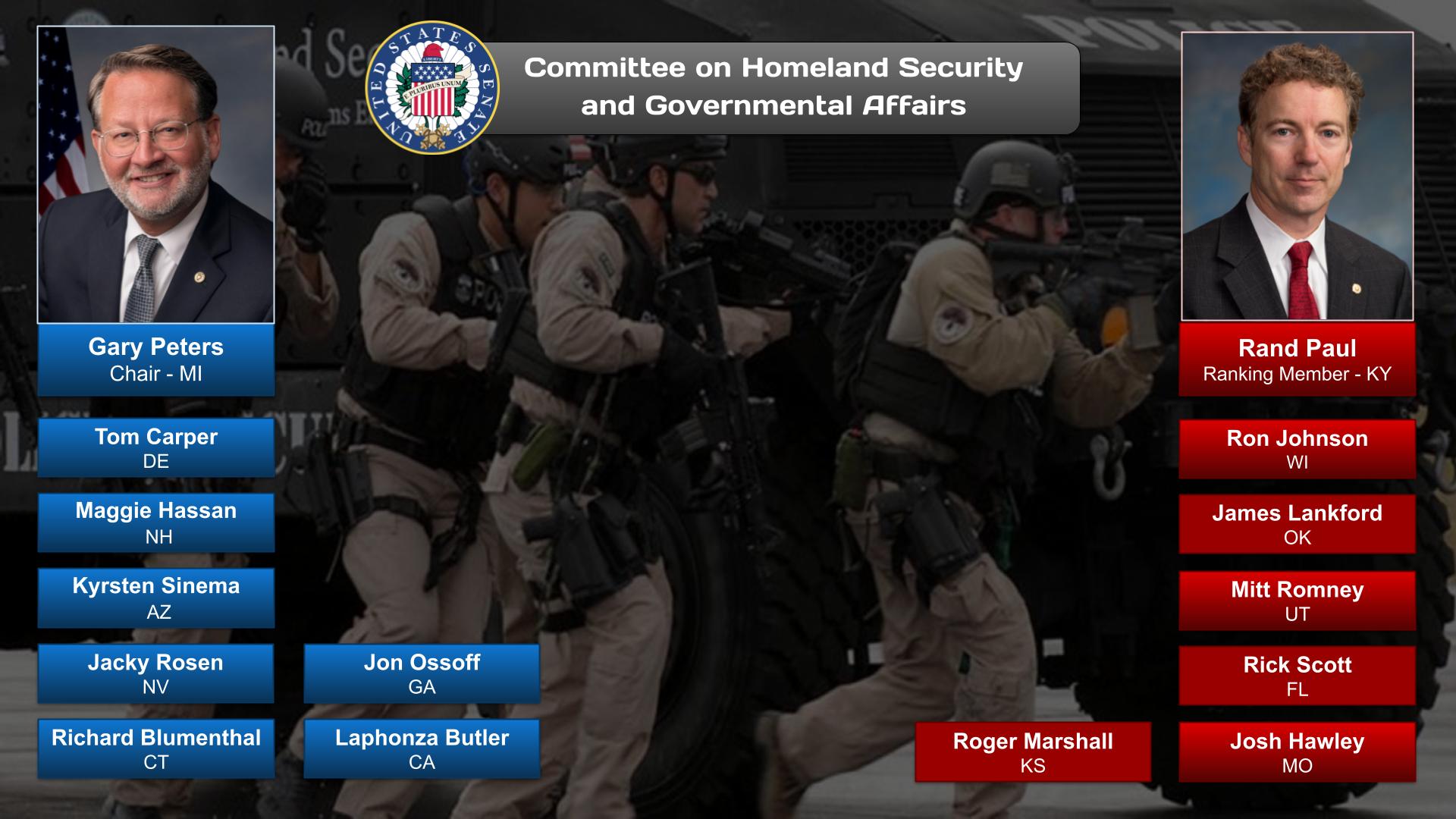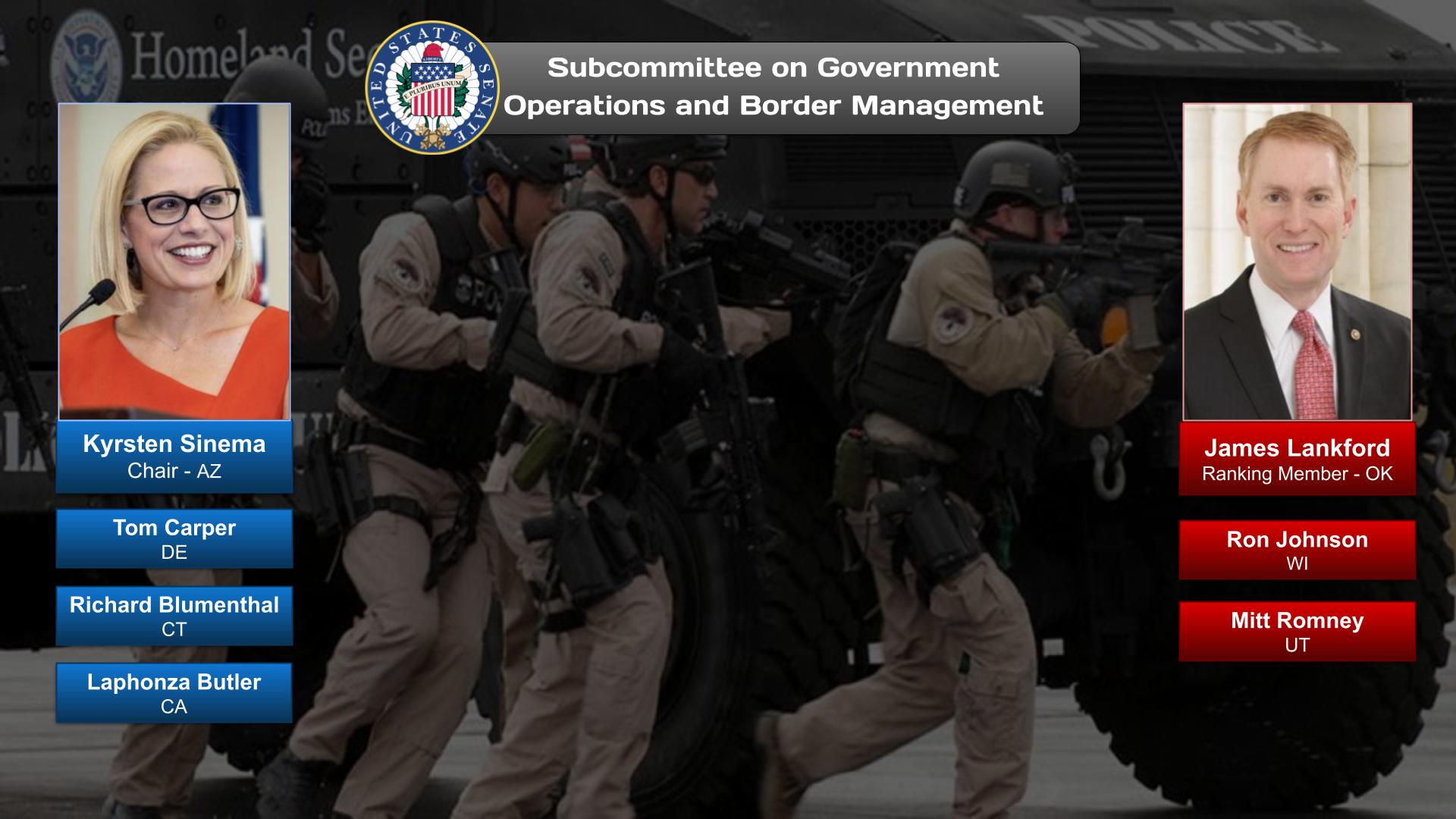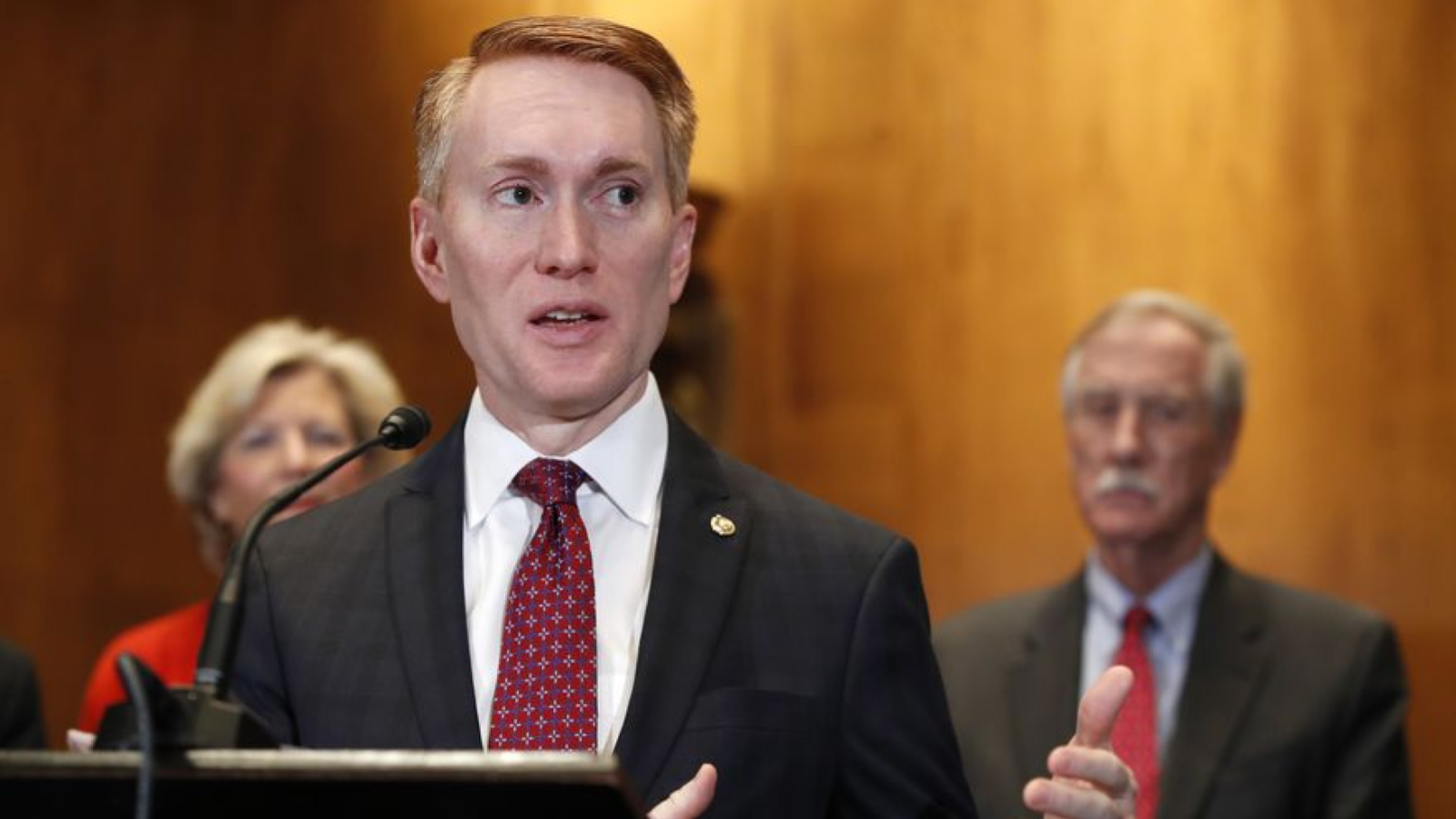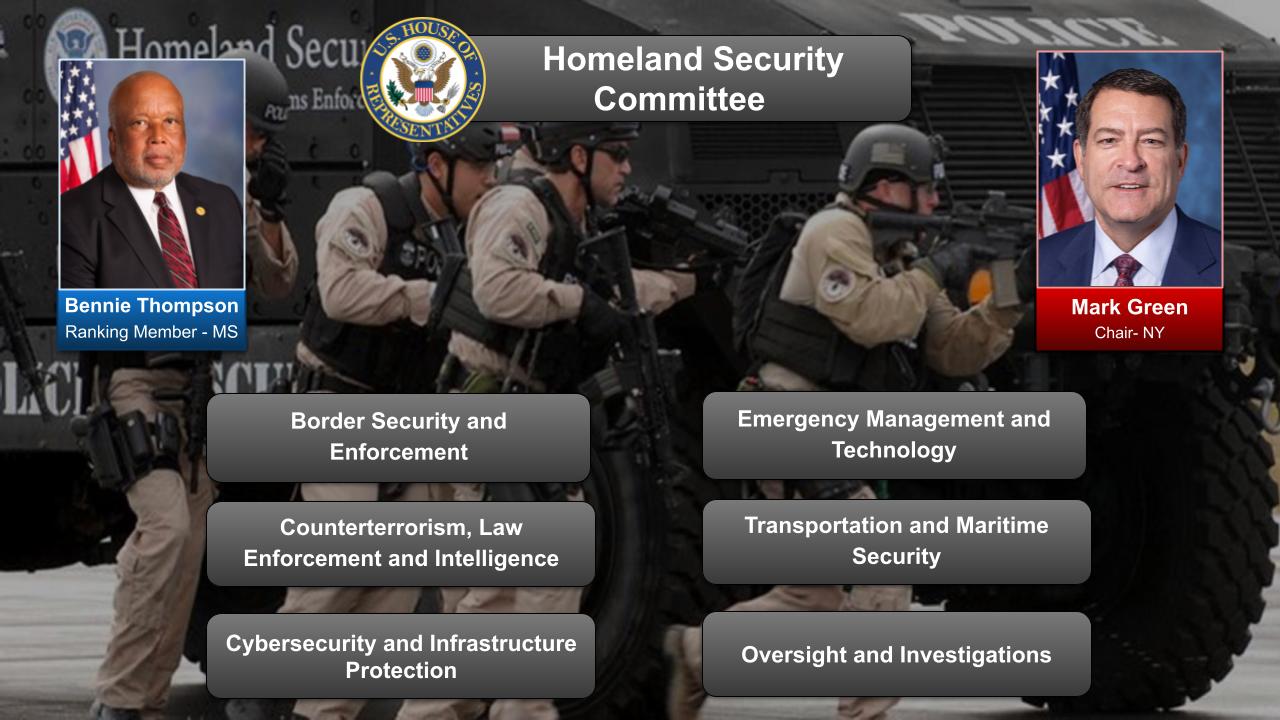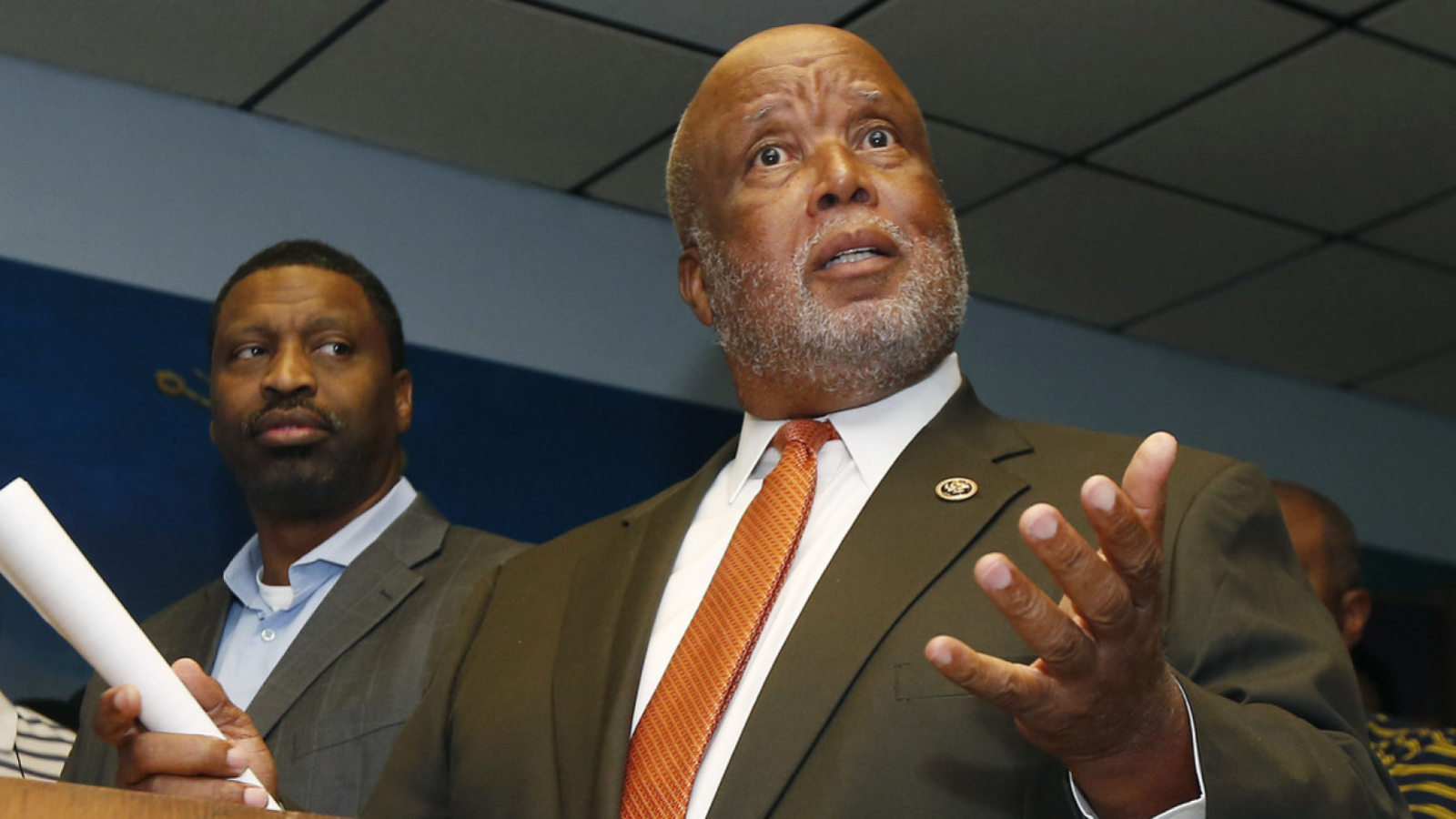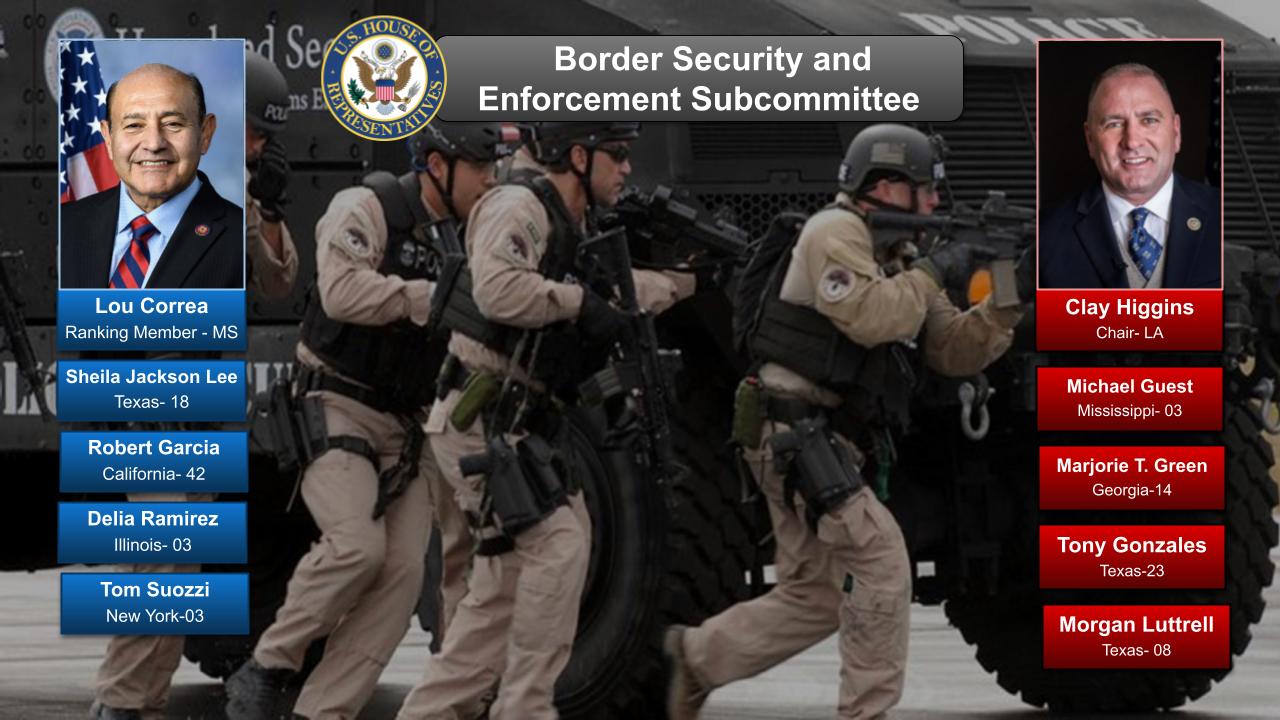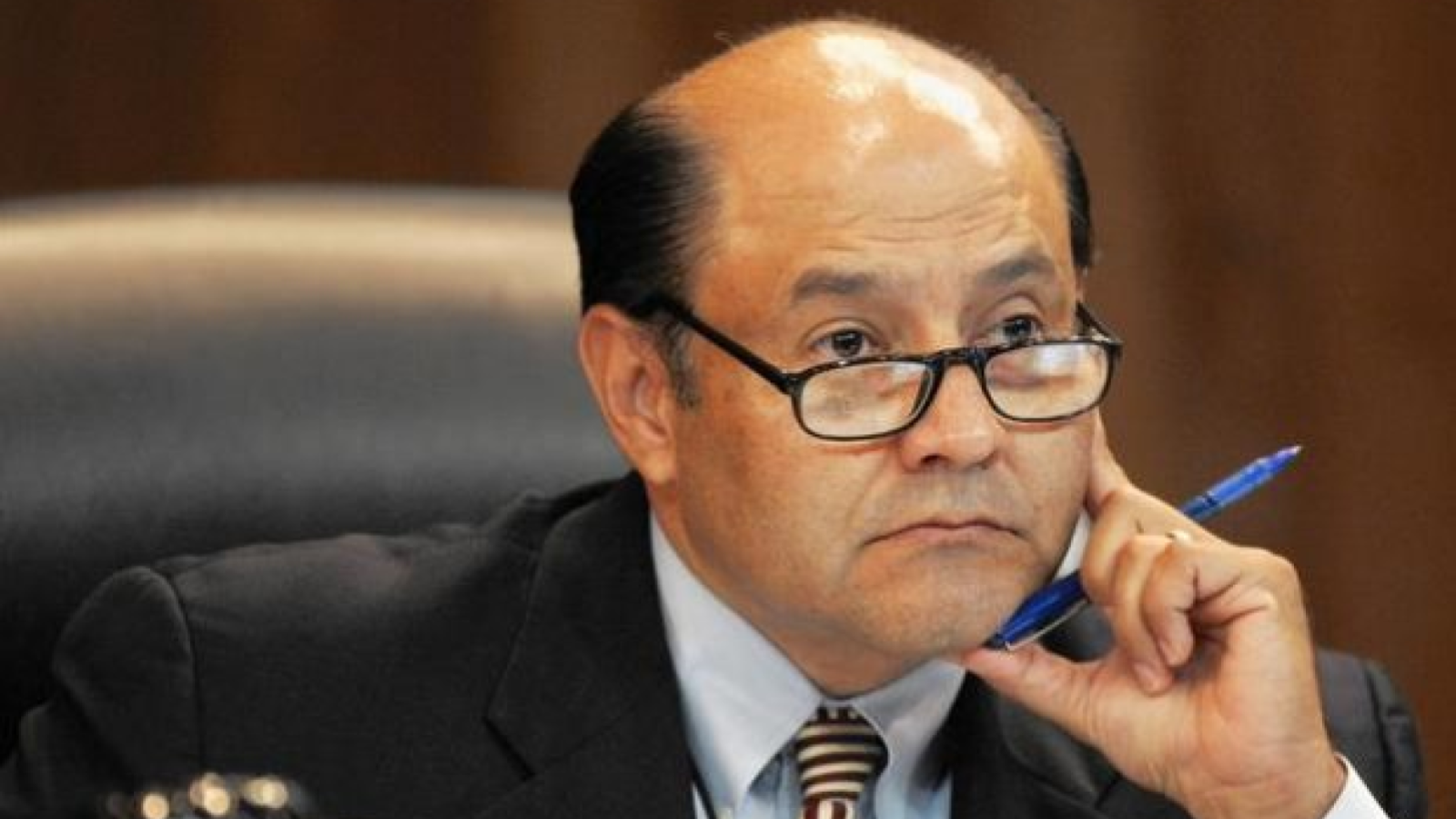Summary
This post on Border Security is 1 of 3 issues that US onAir curators are focusing on in the Immigration category.
In the United States, border security includes the protection of ports, airports, and the country’s 3,017-mile (4,855 km) land border with Canada and 1,933-mile (3,111 km) border with Mexico. The U.S. concept of border security is deeply entwined with the persistent actual or perceived threat of terrorism, as well as more universal concerns such as immigration control, smuggling, and human trafficking. As such, the U.S. federal government is constantly reevaluating and adjusting its border security policies to reflect the perceived threats posed to the United States.
The House Border Security and Enforcement Subcommittee within the House Homeland Security Committee
along with the House Judiciary’s Subcommittee on Immigration Integrity, Security, and Enforcement have jurisdiction over border security.
OnAir Post: Border Security
News
PBS NewsHour – January 4, 2024 (09:00)
The U.S. government is set to partially shut down in 15 days unless a funding agreement is reached. But immigration is a key sticking point in those talks, and it’s an issue that has plagued Congress and the White House for years. Homeland Security Secretary Alejandro Mayorkas is the Biden administration’s point man on those negotiations and joined Amna Nawaz to discuss the latest.
About
Check the Immigration post for the party positions, committees, government agencies related to Work Border Security issues.
Challenges
Operational Challenges:
- Increased border crossings: Surge in illegal crossings and asylum seekers due to political instability, economic hardships, and violence in Central America.
- Drug trafficking: Smuggling of illicit drugs, including opioids, across the southern border.
- Human trafficking: Exploitation and forced labor of vulnerable individuals.
- Counterterrorism: Potential for terrorist and extremist threats to enter the country through land crossings.
- Infrastructure limitations: Insufficient border barriers, surveillance systems, and manpower to effectively secure the expansive border.
Policy and Legal Challenges:
- Immigration reform: Lack of comprehensive immigration policy and enforcement measures.
- Refugee processing: Delays and backlogs in adjudicating asylum claims, leading to confusion and overcrowding at the border.
- Unaccompanied minors: Challenges in handling and processing large numbers of unaccompanied children crossing the border.
- Border Patrol morale: Stress and burnout among Border Patrol agents due to demanding workloads and poor working conditions.
- Human rights concerns: Balancing border security with the protection of migrant rights and due process.
Technological Challenges:
- Detection and surveillance: Developing and implementing advanced technologies to detect and intercept illegal crossings and drug smuggling.
- Data management and analysis: Effectively utilizing data to identify patterns, predict threats, and enhance situational awareness.
- Border surveillance infrastructure: Upgrading and maintaining border barriers, sensors, and cameras to monitor and deter illegal activity.
- Counterdrug technologies: Employing innovative technologies to disrupt drug trafficking operations and intercept shipments.
- Cybersecurity: Protecting border security systems and infrastructure from cyber threats and vulnerabilities.
International Cooperation Challenges:
- Collaboration with Mexico and other neighboring countries: Lack of effective coordination and sharing of information with neighboring countries.
- Root causes of migration: Addressing the underlying causes of migration in Central America, such as poverty, violence, and corruption.
- Asylum processing and refugee resettlement: Negotiating international agreements to facilitate refugee processing and resettlement.
- Transnational criminal organizations: Combating and disrupting transnational criminal organizations involved in human trafficking and drug smuggling.
- International security partnerships: Building and strengthening relationships with partner countries to address shared border security threats.
Source: Google Search + Gemini + onAir curation
Solutions
Enhance Physical Infrastructure:
- Construct and maintain secure fencing and barriers along vulnerable borders.
- Implement technology-driven surveillance systems, such as cameras, sensors, and drones.
- Improve lighting along borders to deter crossings at night.
2. Leverage Technology:
- Deploy biometric identification systems to track and identify individuals crossing the border.
- Utilize facial recognition and thermal imaging to detect unauthorized entries.
- Implement data analytics tools to identify patterns and prioritize high-risk areas.
3. Foster International Cooperation:
- Collaborate with neighboring countries to address root causes of illegal immigration.
- Share intelligence and operational strategies to combat transnational criminal organizations.
- Seek diplomatic solutions to resolve underlying political and economic factors driving migration.
4. Address Root Causes:
- Provide economic opportunities and reduce poverty in regions where migrants originate.
- Promote stability and reduce violence in conflict-affected areas.
- Address the demand for drugs and other contraband that fuels border security challenges.
5. Strengthen Enforcement:
- Increase the number of Border Patrol agents and equip them with advanced technology.
- Enhance training and resources for agents to effectively deter and apprehend unauthorized crossings.
- Prosecute individuals and organizations involved in human smuggling and trafficking.
6. Promote Legal Immigration:
- Streamline and modernize the legal immigration process to reduce wait times and prevent visa overstays.
- Expand pathways for foreign workers in high-demand occupations.
- Provide humanitarian protection to asylum seekers and refugees in accordance with international law.
7. Improve Communication and Outreach:
- Engage with communities on both sides of the border to build trust and foster cooperation.
- Provide accurate and timely information about border security policies and procedures.
- Address misinformation and promote public awareness about the challenges and complexities of border management.
8. Reform Asylum System:
- Address the backlog of asylum applications and create a more efficient and fair process.
- Provide legal representation and support to asylum seekers.
- Deter fraudulent asylum claims and enforce consequences for abuse of the system.
9. Invest in Research and Innovation:
- Conduct research to develop and evaluate new technologies and strategies for border security.
- Partner with universities and research institutions to advance knowledge and best practices.
- Explore innovative approaches to address emerging threats and challenges.
10. Foster Bipartisan Collaboration:
- Engage both Republican and Democratic lawmakers in a bipartisan effort to address border security challenges.
- Seek consensus on long-term solutions that balance security and humanitarian concerns.
- Provide sustained funding and support for border security initiatives, regardless of political shifts.
Source: Google Search + Gemini + onAir curation
Websites
Government Agencies:
- U.S. Customs and Border Protection (CBP): https://www.cbp.gov/
- U.S. Border Patrol (USBP): https://www.cbp.gov/border-security
- Department of Homeland Security (DHS): https://www.dhs.gov/
- Office of Border Security (OBS): https://www.dhs.gov/border-security
- U.S. Immigration and Customs Enforcement (ICE): https://www.ice.gov/
Nonprofit Organizations:
- Bipartisan Policy Center: https://bipartisanpolicy.org/issues/immigration
- Brennan Center for Justice: https://www.brennancenter.org/issues/border-security
- Center for Migration Studies: https://cmsny.org/
- National Immigration Forum: https://immigrationforum.org/
- Southern Poverty Law Center: https://www.splcenter.org/
Research Institutions:
- Migration Policy Institute: https://www.migrationpolicy.org/
- RAND Corporation: https://www.rand.org/topics/immigration-and-border-security
- Urban Institute: https://www.urban.org/research/topics/immigration
News and Information:
- BBC News – US-Mexico Border: https://www.bbc.com/news/world-us-canada-44103882
- The New York Times – Border: https://www.nytimes.com/topic/subject/border
- The Washington Post – Border Security: https://www.washingtonpost.com/news/monkey-cage/wp/2017/09/29/what-the-data-says-about-border-security/
- Vox – Immigration: https://www.vox.com/the-big-idea/2019/3/28/18282213/border-immigrant-trump-migrant
- The Wall Street Journal – US-Mexico Border: https://www.wsj.com/news/us-mexico-border-security
Additional Resources:
- National Strategy for Border Security: https://www.dhs.gov/publication/national-strategy-border-security
- Trump Administration’s Immigration and Border Security Policies: https://www.cbp.gov/newsroom/national-media-release/cbp-executes-first-operation-steel-curriculum
- American Civil Liberties Union (ACLU) Immigrant Rights: https://www.aclu.org/issues/immigrants-rights
Source: Google Search + Gemini + onAir curation
Legislation
Laws
Source: Google Search + Gemini + onAir curation
Secure Fence Act of 2006:
- Mandated the construction of 700 miles of physical barriers along the US-Mexico border.
Secure Border Initiative (SBI):
- A comprehensive border security strategy that includes enhanced border patrol agents, technology upgrades, and infrastructure improvements.
Uniting and Strengthening America by Providing Appropriate Tools Required to Intercept and Obstruct Terrorism (USA PATRIOT Act):
- Expanded border patrol authorities and created new tools for tracking terrorist activity.
REAL ID Act of 2005:
- Established minimum standards for state-issued driver’s licenses and identification cards to prevent identity theft and enhance border security.
Border Security, Economic Opportunity, and Immigration Modernization Act (S.744):
- A comprehensive immigration reform bill that would have addressed border security issues through increased fencing, enhanced technology, and increased border patrol agents. (Not passed)
Border Security and Enforcement Act of 2018:
- Provided funding for border wall construction and increased border patrol personnel.
Border Security and Immigration Enforcement Improvements Act of 2019:
- Allocated funding for border security initiatives, including technology enhancements and personnel recruitment.
Enhanced Border Security and Modernization Act of 2019:
- Authorized the construction of additional physical barriers along the US-Mexico border.
Public Law 116-55:
- Declared a national emergency on the US-Mexico border and authorized the use of military funding for border wall construction.
Border Crisis Relief Act of 2023:
- Provided funding for humanitarian assistance, border security operations, and the deployment of additional border patrol agents.
New Bills Introduced 2023-2024
Source: Google Search + Gemini + onAir curation
Title: Border Security and Immigration Modernization Act of 2023 (S. 2147)
- Sponsor: Sen. John Cornyn (R-TX)
- Status: Introduced in May 2023
- Key Provisions:
- Increases funding for border security personnel and infrastructure
- Streamlines the asylum process
- Expands the use of technology, such as drones and sensors, to monitor the border
- Creates a new guest worker program for low-skilled workers
Title: Secure Our Border Act of 2023 (H.R. 1282)
- Sponsor: Rep. Clay Higgins (R-LA)
- Status: Introduced in March 2023
- Key Provisions:
- Requires the construction of a physical barrier along the entire US-Mexico border
- Increases the number of border patrol agents
- Authorizes the use of lethal force to deter illegal crossings
- Criminalizes illegal entry into the US
Title: Border Security and Economic Prosperity Act of 2023 (S. 1150)
- Sponsor: Sen. Mark Warner (D-VA)
- Status: Introduced in February 2023
- Key Provisions:
- Increases funding for border security technology and infrastructure
- Provides a pathway to citizenship for undocumented immigrants who meet certain requirements
- Expands legal immigration pathways for skilled workers and family members
- Invests in economic development in border communities
Title: Secure Borders, Strong Communities Act of 2023 (H.R. 1807)
- Sponsor: Rep. Henry Cuellar (D-TX)
- Status: Introduced in March 2023
- Key Provisions:
- Balances border security with humanitarian concerns
- Invests in technology and infrastructure to improve border management
- Supports the deployment of additional CBP officers and immigration judges
- Creates a temporary guest worker program for individuals seeking asylum
Title: Humanitarian Border Security Act of 2023 (S. 1526)
- Sponsor: Sen. Alex Padilla (D-CA)
- Status: Introduced in April 2023
- Key Provisions:
- Prioritizes humanitarian concerns at the border
- Ensures access to asylum for individuals fleeing persecution
- Provides funding for humanitarian aid to asylum seekers and border communities
- Reforms the asylum process to make it more efficient and humane
Committees, Agencies, & Programs
Committees
Source: Google Search + Gemini + onAir curation
House of Representatives
- House Committee on Homeland Security: Oversees the Department of Homeland Security (DHS), which is responsible for border security. Subcommittees include:
- Border Security, Facilitation, and Operations Subcommittee
- Cybersecurity, Infrastructure Protection, and Innovation Subcommittee
- Federal Emergency Management Agency and National Preparedness Subcommittee
- Transportation Security and Infrastructure Protection Subcommittee
- House Committee on Appropriations: Subcommittees that fund border security programs include:
- Homeland Security Subcommittee
- State and Foreign Operations Subcommittee
Senate
- Senate Committee on Homeland Security and Governmental Affairs: Similar to the House Homeland Security Committee, this committee oversees DHS and has subcommittees that address border security.
- Senate Committee on Appropriations: Subcommittees that fund border security programs include:
- Homeland Security Subcommittee
- State, Foreign Operations, and Related Programs Subcommittee
Joint Committees
- Joint Committee on Immigration Reform: Reviews and develops proposals for comprehensive immigration reform, including border security measures.
Other Committees
- House Committee on Judiciary: Has jurisdiction over immigration laws and policies that impact border security.
- Senate Committee on Judiciary: Similar to the House Judiciary Committee, this committee addresses immigration issues related to border security.
- House Armed Services Committee: Subcommittees such as the Subcommittee on Readiness and Oversight can examine the role of the military in border security.
- Senate Armed Services Committee: Similar to the House Armed Services Committee, this committee can review military involvement in border security through subcommittees.
Additional Subcommittees and Caucuses
- House Homeland Security Subcommittee on Border Security, Facilitation, and Operations: Focuses specifically on border security issues.
- Senate Homeland Security Subcommittee on Border Management, Protection, and Facilities: Similar to the House Border Security Subcommittee.
- House Border Security Caucus: A bipartisan group of members who advocate for enhanced border security.
- Senate Border Security Caucus: A similar bipartisan group of senators focused on border security.
Government Agencies
Source: Google Search + Gemini + onAir curation
Department of Homeland Security (DHS)
- Customs and Border Protection (CBP): Enforces federal laws at ports of entry, investigates transnational crime, and interdicts illegal trafficking.
- Border Patrol: Patrols borders, prevents illegal entry, and investigates border security threats.
- Transportation Security Administration (TSA): Screens passengers and baggage at airports, land borders, and seaports.
- Immigration and Customs Enforcement (ICE): Enforces immigration and customs laws, investigates immigration fraud, and deports individuals who violate laws.
Department of Defense (DoD)
- Northern Command (NORTHCOM): Protects the United States from threats originating in or through North America.
- U.S. Customs and Border Protection Air and Marine Operations (AMO): Conducts aerial and maritime surveillance, interdicts smugglers, and supports other border security agencies.
Department of State (DoS)
- Bureau of Consular Affairs: Processes visas and passports, supports U.S. citizens abroad, and interacts with foreign governments on border security issues.
- Bureau of International Narcotics and Law Enforcement Affairs (INL): Provides training and assistance to foreign governments in combating transnational crime and enhancing border security.
Department of Justice (DoJ)
- Drug Enforcement Administration (DEA): Investigates and prosecutes individuals involved in drug trafficking, which can impact border security.
- Federal Bureau of Investigation (FBI): Investigates transnational crime, terrorism, and other threats that affect border security.
Department of Health and Human Services (HHS)
- Centers for Disease Control and Prevention (CDC): Monitors and responds to public health threats at borders.
- Food and Drug Administration (FDA): Enforces laws related to the import and export of food, drugs, and medical devices, which can impact border security.
Other Federal Agencies
- Federal Aviation Administration (FAA): Regulates aviation within the United States, including border security operations.
- Environmental Protection Agency (EPA): Enforces environmental laws that impact border security, such as cross-border pollution.
- National Guard: Provides support to federal border security agencies when requested.
U.S. Customs and Border Protection (CBP)
Source: Government Website
With more than 60,000 employees, U.S. Customs and Border Protection, CBP, is one of the world’s largest law enforcement organizations and is charged with keeping terrorists and their weapons out of the U.S. while facilitating lawful international travel and trade.
As the United States’ first unified border entity, CBP takes a comprehensive approach to border management and control, combining customs, immigration, border security, and agricultural protection into one coordinated and supportive activity.
Vision Statement
Enhancing the nation’s security through innovation, intelligence, collaboration and trust.
Mission Statement
Protect the American people, safeguard our borders, and enhance the nation’s economic prosperity.
Enduring Mission Priorities
- Counter Terrorism – Anticipate, detect and disrupt the threat of terrorists, their weapons and actions to protect the people and economy of the United States.
- Combat Transnational Crime – Detect, deter and disrupt transnational organized crime that threatens U.S. national and economic security interests at and beyond the border.
- Secure the Border – Protect the Homeland through the air, land and maritime environments against illegal entry, illicit activity or other threats to uphold national sovereignty and promote national and economic security.
- Facilitate Lawful Trade and Protect Revenue – Enable fair, competitive and compliant trade and enforce U.S. laws to ensure safety, prosperity and economic security for the American people.
- Facilitate Lawful Travel – Enhance, enable and transform the travel experience by anticipating, detecting and intercepting threats prior to and at ports of entry.
Ethos
- We are the guardians of our Nation’s borders.
- We are America’s front line.
- We safeguard the American homeland
- at and beyond our borders.
- We protect the American people against
- terrorists and the instruments of terror.
- We steadfastly enforce the laws of the United States
- while fostering our Nation’s economic security through
- lawful international trade and travel.
- We serve the American people with vigilance,
- integrity, and professionalism.
Core Values
- Vigilance is how we ensure the safety of all Americans. We are continuously watchful and alert to deter, detect and prevent threats to our nation. We demonstrate courage and valor in the protection of our nation.
- Service to Country is embodied in the work we do. We are dedicated to defending and upholding the Constitution of the United States. The American people have entrusted us to protect the homeland and defend liberty.
- Integrity is our cornerstone. We are guided by the highest ethical and moral principles. Our actions bring honor to ourselves and our agency.
Programs & Initiatives
Source: Google Search + Gemini + onAir curation
Homeland Security Appropriations Act
- Provides funding for various border security initiatives, including:
- Border Patrol and Customs and Border Protection (CBP) operations
- Border wall and fence construction
- Technology investments, such as surveillance cameras and sensors
2. Secure Fence Act of 2006
- Authorized the construction of 700 miles of physical barriers along the US-Mexico border
- Funded by the Homeland Security Appropriations Act
3. Operation Stonegarden
- A federal grant program that funds local law enforcement agencies to assist with border security operations
- Focuses on coordinating efforts between federal and local authorities to prevent illegal entries and drug trafficking
4. Enhanced Border Security Initiative (EBSI)
- A comprehensive plan to enhance border security through a combination of physical barriers, technology, and increased personnel
- Includes the construction of a virtual fence and the deployment of mobile surveillance units
5. Automated Biometric Identification System (ABIS)
- A nationwide database of fingerprints and other biometric data used to identify individuals attempting to cross the border illegally
- Deployed at ports of entry and other border crossings
6. Border Patrol Boat Program
- Provides funding for the acquisition and operation of patrol boats to monitor and intercept illegal waterborne crossings
- Focuses on areas with high boat traffic, such as the Gulf of Mexico and the Pacific Ocean
7. Operation Linebacker
- A coordinated effort between the Department of Homeland Security and the Department of Defense to address drug trafficking and illegal immigration along the US-Mexico border
- Utilizes military assets to support border security missions
8. Border Security Technology Assessment and Deployment Program (BSTAD)
- Evaluates and deploys new border security technologies, such as sensors, surveillance systems, and mobile platforms
- Aims to improve detection and response capabilities for border agents
9. BioWatch Program
- Monitors the air for biological threats, including potential bioterrorism attacks
- Utilizes detection devices at ports of entry and other strategic locations along the border
10. State Homeland Security Grants Program
- Provides funding to states and local governments for homeland security initiatives, including border security
- Supports efforts to strengthen coordination, improve communication, and enhance first responder capabilities
More Information
Nonpartisan Organizations
Source: Google Search + Gemini + onAir curation
- Center for Immigration Studies: A conservative think tank that advocates for reducing immigration and increasing border enforcement.
- Migration Policy Institute: A nonpartisan think tank that studies immigration and border security.
- National Immigration Forum: A pro-immigration advocacy organization that advocates for comprehensive immigration reform.
- Southern Poverty Law Center: A civil rights organization that monitors hate groups and advocates for border security.
- American Civil Liberties Union: A civil rights organization that advocates for the rights of immigrants and refugees.
- Southwest Border Security Coalition: A coalition of law enforcement, business, and community leaders that advocates for increased border security.
- U.S. Chamber of Commerce: A business organization that advocates for increased border security.
- Cato Institute: A libertarian think tank that advocates for reducing border enforcement and increasing immigration.
Partisan Organizations
Source: Google Search + Gemini + onAir curation
Republican Organizations
- Federation for American Immigration Reform (FAIR): Advocates for stricter immigration controls and increased border security.
- Center for Immigration Studies: Conducts research and analysis on immigration, with a focus on border security and illegal immigration.
- Secure Borders Coalition: A coalition of organizations that supports increased border security and reduced illegal immigration.
- The Heritage Foundation: A conservative think tank that has developed policy proposals for enhancing border security.
- Americans for Legal Immigration PAC (ALIPAC): An organization that supports stricter immigration enforcement, including increased border security.
Democratic Organizations
- American Civil Liberties Union (ACLU): Fights for the rights of immigrants and opposes policies that restrict migration or separate families.
- National Immigration Forum: Advocates for comprehensive immigration reform and humane treatment of immigrants.
- Immigrant Legal Resource Center (ILRC): Provides legal services and support to immigrants, including those affected by border security policies.
- Southern Poverty Law Center: Monitors hate groups and works to combat racism and xenophobia.
- National Association of Latino Elected and Appointed Officials (NALEO): Represents Latino leaders and advocates for policies that support immigrant communities.
“Border security in the US” (wiki)
Contents
In the United States, border security includes the protection of ports, airports, and the country’s 3,017-mile (4,855 km) land border with Canada and 1,933-mile (3,111 km) border with Mexico.
Central to US national security, border security incorporates strategies against threats such as terrorism, illegal immigration, smuggling, and human trafficking. The Department of Homeland Security (DHS), established post the September 11 attacks, has an important role in adapting border security measures to counter perceived threats effectively.
The U.S.’s approach to border security has evolved in response to incidents like the 9/11 terrorist attacks, catalyzing extensive policy reforms to fortify homeland protection. Such events have emphasized the necessity of visa issuance procedures and stringent border controls, leading to continuous debates over the balance between open borders and national security, especially on the politically sensitive US-Mexico border.
Historical context
Immediately after the events of September 11, 2001, the Federal Government placed a higher priority on homeland security, such as intelligence reform. Following 9/11, the border security apparatus was heavily scrutinized and became the target of public criticism. Moreover, border security issues drew additional criticism from the public and from senior officials in the government after it emerged that the 9/11 hijackers held temporary U.S tourist visas,[1] which allowed legal entry into the US.[2] Following the 2001 attacks, various measures have been implemented to increase border security, including the creation of the Department of Homeland Security (DHS) in 2002, as well as a number of other new policies and procedures.
Threats of terrorism
Land borders
The sheer sizes of both the Canada–US and Mexico–US borders present the Federal Government’s security forces with challenges with regards to their ability to protect the homeland. According to a 2004 report from the Congressional Research Service, there are “great difficulties in securing the many points through which people and goods may enter legally, and the thousands of miles of ‘lines’, thinly guarded stretches of coasts and land borders which entry is illegal.”[3]
Given the phenomenon of undocumented migration at the U.S.-Mexico border, some government officials and political candidates have made public statements referring to the threat of terrorists crossing the Southwest border.[4][5] The Washington Office on Latin America Border Fact Check blog has pointed out that the Mexico section of the State Department’s 2012 Country Reports on Terrorism notes that “No known international terrorist organization had an operational presence in Mexico and no terrorist group targeted U.S. citizens in or from Mexican territory”.[6] In 2011, the DHS affirmed that it did not have “any credible information on terrorist groups operating along the Southwest border”.[7]
Ports
The Federal Government faces threats to national security through its many ports. As part of her testimony at a Congressional Hearing on container security, JayEtta Hecker, Director for Physical Infrastructure Issues at the Government Accountability Office, said “drugs and illegal aliens are routinely smuggled into this country, not only in small boats but also hidden among otherwise legitimate cargoes on large commercial ships. These same pathways are available for exploitation by a terrorist organization or any nation or person wishing to attack us surreptitiously.”[8] Ms. Hecker’s testimony also touched on the fact that the sheer number of cargo containers that enter the United States augments this threat.[9] According to the March 2008 edition of Scientific American, more than 42 million 20-foot (6.1 m) containers enter U.S. ports each year.[10]
Airports
More than 87 million people enter the U.S. every year through airports, which makes them a primary point of entry for potential terrorists.[original research?] For example, in May 2012, the Central Intelligence Agency (CIA) revealed that it uncovered a plot to bring down a commercial plane using explosive devices. According to the CIA, these plans belonged to members of Al-Qaeda.[11][citation needed][12]
Current policies and security mechanisms
Land borders
In a 2008 article for the Manhattan Institute, Rudolph Giuliani argued that border security was one of the most critical issues facing the United States, and should by monitored by a single organization that embraced CompStat, the organizational philosophy of the NYPD.[13] A myriad of agencies guard U.S. land borders, including the United States Border Patrol, U.S. Immigration and Customs Enforcement (ICE), the DHS, and the National Guard.[14]
The DHS has completed nearly 700 miles of fencing along the borders,[15] and, as of 2011, 20,700 border patrol agents were employed to guard the border.[15][16] In addition, the Border Patrol now has more than 18,300 agents deployed on both the southern and northern border.[16] The DHS uses technology along the border such as unattended ground sensors, truck-mounted mobile surveillance systems, remote video surveillance systems, unmanned aerial systems, fixed- and rotary-wing aircraft,[16] and the Augmented Integrated Surveillance Intelligence System (ISIS).[17]
Ports
From 2001 to 2006, the Federal Government increased funding for port security by 700%.[18] This increase in funding allowed the DHS to implement a defense in depth against external threats. U.S. Customs and Border Protection, the U.S. Coast Guard, Terminal Operator, and the Port Authority shared responsibility for providing security at U.S. ports. In 2006, those agencies screened all cargo entering the country.[18] U.S. Customs and Border Patrol utilized X-ray, gamma ray machines, and radiation detection devices to screen cargo, operating over 680 radiation portal monitors and over 170 large scale non-intrusive inspection devices. In addition, there were more than 600 canine teams that could “identify narcotics, bulk currency, human beings, explosives, agricultural pests, and chemical weapons” working U.S. ports of entry.[18]
Airports
Due to the massive numbers of travelers, and the consequent pressure for airport security mechanisms to be quick, efficient, and effective, the DHS has implemented the Automated Targeting System, a data mining program. The Automated Targeting System works by collecting information from airlines such as passport data, credit card numbers, and identity information. That information is then run against a list of known terrorists, phone numbers connected to terrorist cells, and other pertinent intelligence data.[19]
On November 19, 2001, the United States passed the Aviation and Transportation Security Act, creating the Transportation Security Administration (TSA), and requiring airlines to pass information on all U.S. bound travelers to the DHS. This data is fed into the Automated Targeting System,[20] and helps TSA, FBI, CIA, and other organizations to create the Selectee and No Fly List.
In addition to the ATS System, another mechanism to deter terrorists is utilized in case they are not detected by the flagging protocols. Federal Air Marshals are the law enforcement branch of the Transportation Security Administration. They fly either in uniform or incognito and act as the law enforcement while on board to protect passengers and crew members from criminals and terrorists.[21]
The Secondary Security Screening Selection system flags passengers for extra surveillance while in the airport but does not prohibit them from flying. These individuals, often referred to as “selectees”, are pulled aside at security checkpoints and searched thoroughly. Their luggage may be hand searched. Individuals are added to the lists through airport screening processes. Individuals are potentially flagged if they have purchased a ticket in cash, purchased a ticket within the previous 24 hours, purchased a one-way ticket, or arrived with no baggage.[22]
Starting in March 2010, the TSA begin a wide-scale deployment of full body scanners, in addition to metal detectors, to physically screen airline passengers.[23]
No Fly List
The No Fly List, a comprehensive list of individuals prohibited from flying into or out of the United States, has exponentially grown in size. The List existed before 9/11 but only contained the names of 16 people and now lists over one million names. The List includes high-profile individuals such as the Bolivian President and other foreign dignitaries. The List still contains 14 out of the 19 September 11 hijackers and several other deceased individuals.[24]
The system occasionally leads to a “false positive” which is the accidental flagging of individuals that have similar names to suspected terrorists or are on the List for illegitimate reason. In some cases, children under the age of five have been flagged as suspects. It contains many common names such as Gary Smith or Robert Johnson which makes traveling very difficult for all individuals with that name. Several U.S. congressmen have name matches on the list including Senator Ted Kennedy, who has subsequently been stopped at airports. The List does not include the names of individuals involved in the liquid explosive terrorist attack attempt. TSA also reported that some of the names of the most dangerous terrorists are not on the list in case the List is leaked. Daniel Brown, a U.S. Marine returning from Iraq, was denied entry into the United States because his name matched one on the list. He later found out that he had been flagged on a previous flight for having gunpowder residue on his boots which was likely acquired during an earlier tour of duty in Iraq.[25]
Impact of US-Mexico border security policies
Between 2010 and 2012, the DHS seized almost 75% more money, over a third more narcotics, and nearly double the weapons seized between 2006 and 2008 along the south-west border.[26] In the same period, south-west border states have experienced an average 40% drop in violent crime rates, and the four major cities with the lowest crime rates in the US are all in border states.[26]
See also
References
- ^ “Identity and Immigration Status of 9/11 Terrorists”. Federation for American Immigration Reform. February 2004. Retrieved March 14, 2011.
- ^ “Background: U.S. Land Border Crossing Updated Procedures”. US Department of Homeland Security. September 16, 2008. Retrieved March 14, 2011.
Beginning January 31, 2008 the Department of Homeland Security is: 1. Ending oral declarations at the border, except in extraordinary situations, 2. Accepting a list of about two dozen types of documents at the border instead of the over 8,000 documents currently being accepted
- ^ Frittelli, John F. (2005). Port and Maritime Security: Background and Issues for Congress (PDF) (Report). Congressional Research Service.
The terrorist attacks of September 11, 2001 heightened awareness about the vulnerability to terrorist attack of all modes of transportation. Port security has emerged as a significant part of the overall debate on U.S. homeland security. The overarching issues for Congress are providing oversight on current port security programs and making or responding to proposals to improve port security.
- ^ Pallack, Becky (August 29, 2012). “Grijalva slams Saucedo Mercer on ‘Middle Easterner’ comments (updated)”. Arizona Daily Star. Retrieved September 24, 2012.
- ^ Isacson, Adam. “Are terrorists crossing the border “from time to time?”“. Border Fact Check. Washington Office on Latin America. Retrieved September 24, 2012.
- ^ “Country Reports on Terrorism: Western Hemisphere Overview”. Country Reports on Terrorism. United States Department of State. Retrieved September 24, 2012.
- ^ Goerdt, Ana. “Do terrorists use the U.S.-Mexico border to enter the United States?”. Border Fact Check. Washington Office on Latin America. Retrieved September 24, 2012.
- ^ Hecker, JayEtta Z. (November 18, 2002). “Container Security: Current Efforts to Detect Nuclear Materials, New Initiatives, and Challenges” (PDF). United States General Accounting Office. United States Government. p. 3. Retrieved March 15, 2011.
As indispensable as the rapid flow of commerce is, the terrorist attacks of September 11th have served to heighten awareness about the supply system’s vulnerability to terrorist actions. Drugs and illegal aliens are routinely smuggled into this country, not only in small boats but also hidden among otherwise legitimate cargoes on large commercial ships. These same pathways are available for exploitation by a terrorist organization or any nation or person wishing to attack us surreptitiously. The Brookings Institution reported in 2002 that a weapon of mass destruction shipped by container or mail could cause damage and disruption costing the economy as much as $1 trillion.3 Port vulnerabilities stem from inadequate security measures as well as from the challenge of monitoring the vast and rapidly increasing volume of cargo, persons, and vessels passing through the ports. Against this backdrop, it is not surprising that various assessments of national security have concluded that the nation’s ports are far more vulnerable to terrorist attacks than the nation’s aviation system, where most of the nation’s efforts and resources have been placed since September 11th.
- ^ With more than 6 million containers a year entering U.S. ports, examining them all has not been possible. Instead, Customs has acknowledged that its approach relies on reviewing shipping manifests, invoices and other commercial documents, and intelligence leads to target approximately 2 percent of the containers that enter the country nationwide for physical inspection, though the actual percentage varies from port to port.
- ^ Cochran, Thomas B.; McKinzie, Matthew G. (March 24, 2008). “Detecting Nuclear Smuggling”. Scientific American. 298 (4): 98–102, 104. Bibcode:2008SciAm.298d..98C. doi:10.1038/scientificamerican0408-98. PMID 18380147. Retrieved March 15, 2011.
- ^ Alcorn, J. (2012, December 5). Airport security. The New York Times.
- ^ MacLeod, Scott (March 28, 2005). “A Jihadist’s Tale”. Time Magazine. Time Inc. Archived from the original on March 29, 2005. Retrieved March 15, 2011.
After he was denied entry at Chicago’s O’Hare International Airport for apparently falsifying details on his visa application, al-Banna’s life took a turn that led him down the path of radical Islam and ultimately to join the insurgency against the U.S. in Iraq. His odyssey ended on March 3 when al-Banna’s brother Ahmed received a call on his cell phone from a man identifying himself as “one of your brothers from the Arab peninsula”–the term radical Islamists use to signify the core of the Muslim world, centered on the holy city of Mecca. Al-Banna’s family says that as far as they knew, Ra’ed was in Saudi Arabia working at a new job. But the voice on the other end sounded Iraqi, Ahmed says. “Congratulations,” the caller told him. “Your brother has fallen a martyr.”
- ^ Giuliani, Rudolph W. (Winter 2008). “The Resilient Society”. City Journal. The Manhattan Institute. Retrieved March 15, 2011.
It’s also past time to rethink aviation security and to stop frisking toddlers and grandmothers trying to get onto planes. Instead, good intelligence, behavior analysis, biometrics, and trustedtraveler programs can help speed legitimate travelers through airports. For example, I don’t think that the Transportation Security Administration needs to spend much time searching Senator Ted Kennedy before he boards a plane—which is what the TSA did in August 2004 because a person on a watch list had a similar name. The federal Terrorist Watch List, which still has incomplete and inaccurate information, needs a serious cleanup.
- ^ Archibold, Randal C. (May 25, 2010). “Obama to Send Up to 1,200 Troops to Border”. The New York Times. ISSN 0362-4331. Retrieved February 22, 2024.
- ^ a b Alden, E., & Roberts, B. (2011, July). Are U.S. borders secure? Retrieved December 7, 2012, from Foreign Affairs Plus website: http://www.foreignaffairs.com/articles/67901/edward-alden-and-bryan-roberts/are-us-borders-secure
- ^ a b c “Border Security and Immigration Enforcement Fact Sheet”. US Departmentr of Homeland Security. October 23, 2008. Archived from the original on March 27, 2011. Retrieved March 14, 2011.
Each day at America’s ports of entry U.S. Customs and Border Protection officers inspect more than 1.1 million travelers, including 340,000 vehicles and over 85,000 shipments of goods approved for entry; process more than 70,000 truck, rail and sea containers; collect more than $88 million in fees, duties, and tariffs; seize more than 5,500 pounds in illegal narcotics; and intercept more than 4,400 agricultural items and pests at ports of entry.
- ^ “Inspections and Surveillance Technologies – Extended”. US Customs and Border Protection. Department of Homeland Security. May 5, 2005. Archived from the original on April 10, 2010. Retrieved March 15, 2011.
[ISIS] consist of the Remote Video Surveillance (RVS) camera systems, sensors, and the Integrated Computer Assisted Detection (ICAD) database. ISIS serves to detect intrusion, aid in agent dispatching, and estimating attempts of illegal entry.
- ^ a b c “Fact Sheet: Securing U.S. Ports”. Department of Homeland Security. February 22, 2006. Archived from the original on March 27, 2011. Retrieved March 15, 2011.
The Administration has dramatically strengthened port security since 9/11. * Funding has increased by more than 700% since September 11, 2001. * Funding for port security was approximately $259 million in FY 2001. * DHS spent approximately $1.6 billion on port security in FY 2005. Following 9/11, the federal government has implemented a multi-layered defense strategy to keep our ports safe and secure. New technologies have been deployed with additional technologies being developed and $630 million has been provided in grants to our largest ports, including $16.2 million to Baltimore; $32.7 million to Miami; $27.4 million to New Orleans, $43.7 million to New York/New Jersey; and $15.8 million to Philadelphia.
- ^ Baker. 7.
- ^ Laurance, Castelli. “Privacy Impact Assessment, CBP Automated Targeting System” (PDF). Department of Homeland Security. Retrieved March 26, 2011.
ATS-Passenger (ATS-P) is the module used at all U.S. airports and seaports receiving international flights and voyages to evaluate passengers and crewmembers prior to arrival or departure. It assists the CBP officer’s decision-making process about whether a passenger or crewmember should receive additional screening prior to entry into or departure from the country because the traveler may pose a greater risk for violation of U.S. law. The system analyzes the Advance Passenger Information System (APIS) data from TECS, Passenger Name Record (PNR) data from the airlines, TECS crossing data, TECS seizure data, and watched entities. ATS-P processes available information from these databases to develop a risk assessment for each traveler. The risk assessment is based on a set of National- and user-defined rules which are comprised rule sets that pertain to specific operational/tactical objectives or local enforcement efforts.
- ^ “TSA: Frequently Asked Questions.” TSA. Nov 16, 2008 <“TSA: Privacy”. Archived from the original on April 27, 2007. Retrieved April 22, 2007.>.
- ^ “TSA: Mythbuster.” Weblog post. TSA Watch List. July 14, 2007. Nov 16, 2008 <http://www.tsa.gov/blog/2008/07/myth-buster-tsas-watch-list-is-more.html>.
- ^ “Advanced Imaging Technology (AIT)”. TSA. Archived from the original on March 11, 2012. Retrieved March 26, 2011.
- ^ The 9/11 Commission Report : Final Report of the National Commission on Terrorist Attacks upon the United States. New York: Norton Paperbacks, 2004.
- ^ “‘No-fly’ list delays Marine’s Iraq homecoming.” Apr 12, 2006. NBC News. Nov 16, 2008 <http://www.nbcnews.com/id/12284855>.
- ^ a b “National Southwest Border Counternarcotics Strategy” (PDF). Office of National Drug Control Policy. 2013. Archived (PDF) from the original on January 22, 2017. Retrieved November 20, 2014.
